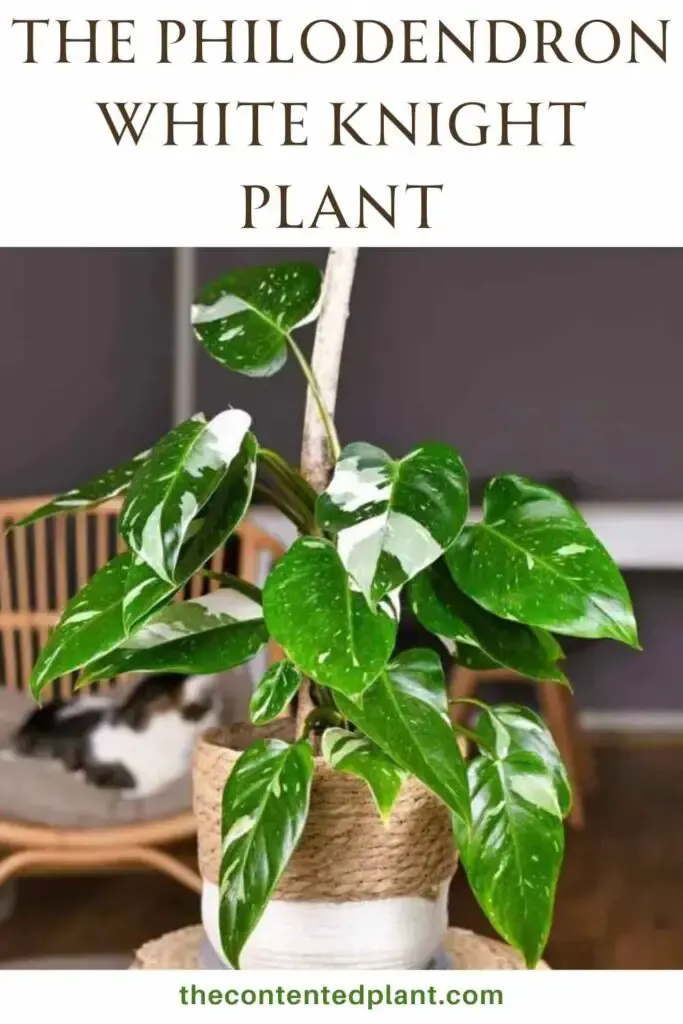What is Philodendron White Knight? Philodendron White Knight is a stunning aroid vine that has become increasingly popular among houseplant enthusiasts in recent years. Known for its distinctive white and green variegation, the White Knight is a relatively new cultivar of the Philodendron genus that has captured the hearts of many plant lovers.
Unlike naturally occurring philodendron species that originate in the rainforests of South America, the White Knight philodendron is a hybrid plant. It was developed and grown in nurseries by crossing parent philodendron plants. Its exact origin and breeding history are not well documented, but it is believed to have been first introduced to the market by a plant nursery in Thailand
In this post, we’ll take a closer look at the White Knight, its unique characteristics, and how to care for it so it thrives in your home.
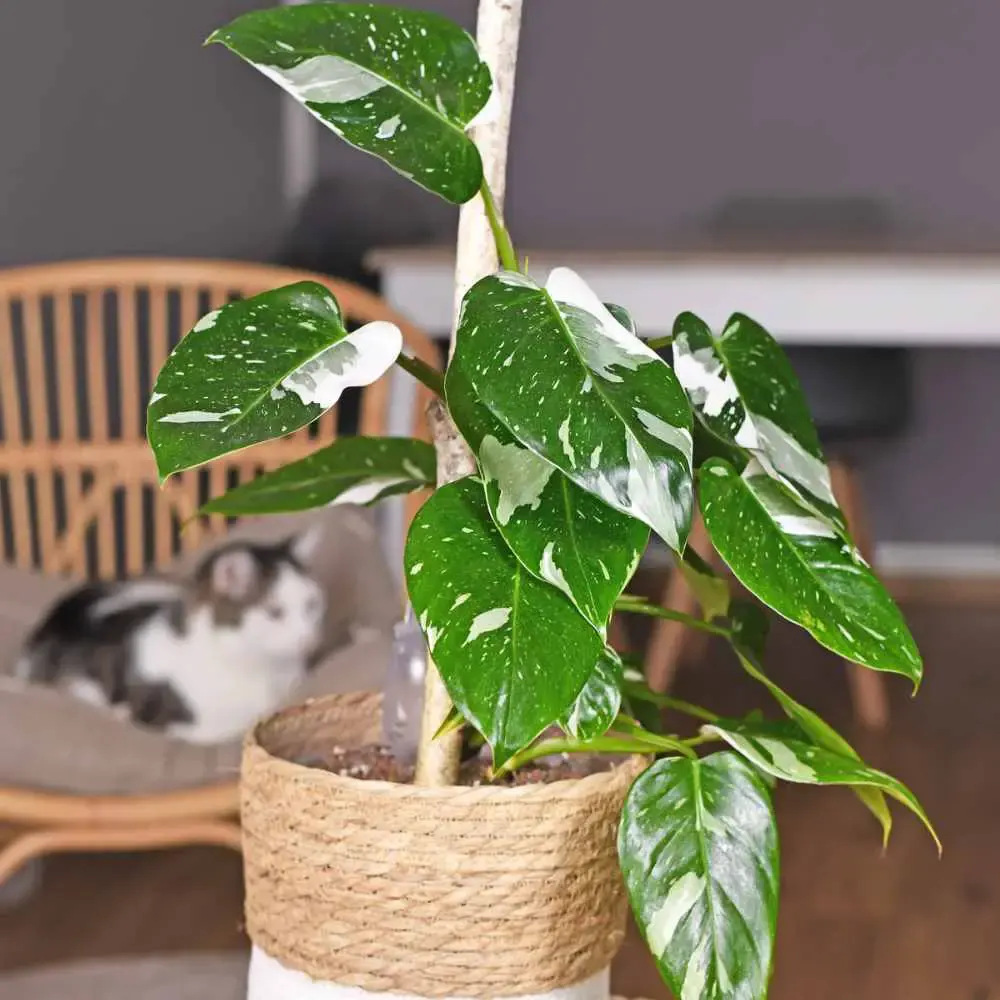
Is Philodendron White Knight rare?
The White Knight is highly sought after by collectors due to its unique variegation and attractive appearance and is considered rare. Its availability varies depending on location and season.
Where to Source this Plant?
Online retailers like Etsy, specialized nurseries, or plant enthusiast groups may be your best bet. But be careful of scammers who charge a high price for inferior or fake plants that are difficult to source, like this one.
Do some research . Make sure online stores are well rated and have a good sales history before ordering high priced plants. You may get lucky checking with local plant stores to see if they have it in stock or can order it for you. Just be sure you get the plant you’re asking for.
Why is a philodendron White Knight so expensive?
- Rarity: The plant is relatively rare, which can drive up its price since it is coveted among collectors.
- Difficulty of propagation: The White Knight is propagated through tissue culture, which is time-consuming, expensive and works against mass production.
- High demand: The plant’s unique variegation, attractive appearance, and popularity on social media platforms have created high demand for it, resulting in higher prices.
The good news is, you can consider your purchase of this plant a good investment. You can propagate it and sell it locally or even long distance to recoup your cost.
Identifying A Philodendron White Knight:
The White Knight, White Princess, and White Wizard are all different hybrid cultivars of Philodendron plants, each with their unique characteristics. HOWEVER, They are very similar in some ways and often mis-marked in garden shops. They are also sometimes mis-identified on Etsy, blogs and social media.
How they are similar: All three plants have a similar white and green variegations. Their differences lie in their growth habits, leaf shape, and color distribution.
Here’s a few clues to help you identify a Philodendron White Knight:
- The leaves of the White Knight are pointed and sword-like, with a slightly elongated shape.
- The stem of the White Knight are typically green with some pink tint as juvenile. Matures to brown or brownish purple stem.
- White Knight variegation consists of broad swaths of white or cream-colored markings on the leaves.
- The Philodendron White Knight has a climbing growth habit. It is a relatively fast-growing vining plant. It can grow quite large if given enough support.
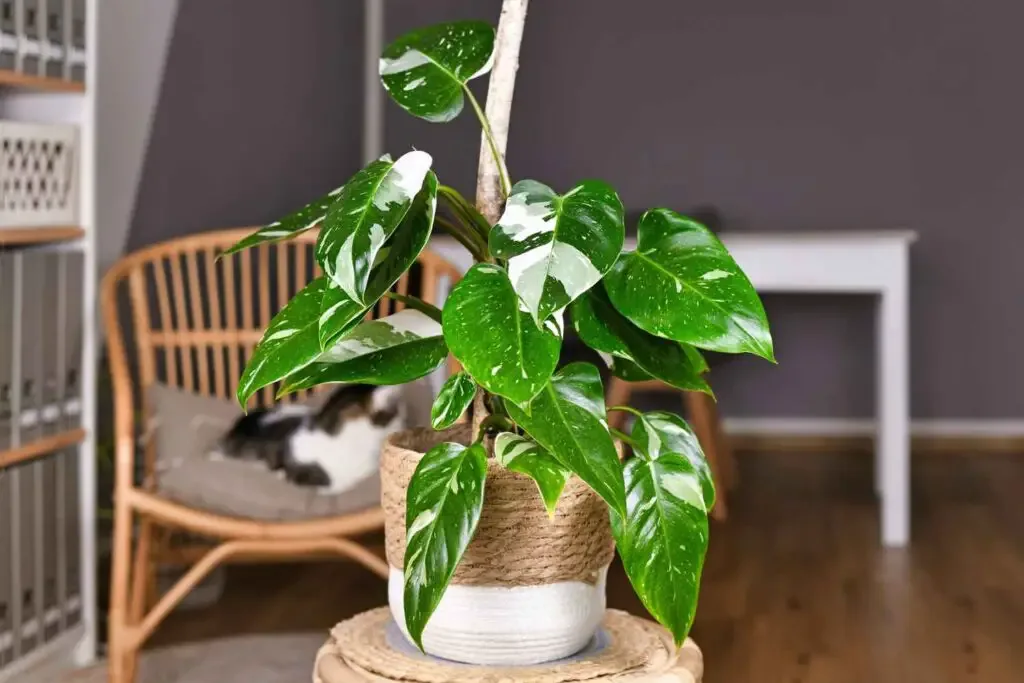
The Philodendron White Knight is a rare cultivated tropical plant known for its stunning white leaves with green veins. The White Knight is a climbing plant that can grow up to 3 feet in height and 2 feet in width. It prefers bright, indirect light and well-draining soil.
Philodendron White Knight Care:
How do you take care of a White Knight philodendron? Like other philodendrons, the White Knight, in general, is a low-maintenance plant that thrives in warm and humid environments. Here’s a quick list of its care needs.
| Familiar Names | philodendron white knight, white knight philodendron, white knight, |
| Scientific Name | Philodendron ‘White Knight’ |
| Plant Family | Araceae |
| Care Difficulty | easy care |
| Temperature | Thrives in temperatures between 65°F and 80°F (18°C to 27°C). |
| Watering | Allow the top inch or so of soil to dry out before watering. Water thoroughly and allow excess water to drain away |
| Humidity | Prefers moderate to high humidity levels. You can increase humidity by placing a humidifier nearby, grouping plants together, or using a pebble tray. |
| Soil | Well-draining potting soil with organic matter is recommended |
| Fertilizer | Feed with a balanced, water-soluble fertilizer every 2-3 months during the growing season (spring and summer) |
| Lighting | Bright, indirect light is ideal for optimal growth and variegation. However, it can tolerate lower light conditions, but the variegation may fade |
| Growth Habit | The growth habit of the White Knight Philodendron is climbing or trailing. It can grow up to several feet long. It will produce aerial roots that will help it cling onto a support structure, like a moss pole. As it grows, it will develop more leaves and stems, creating a fuller appearance. |
| Pruning | Prune occasionally to encourage bushier growth or to remove any yellowing or damaged leaves. |
| Propagation | The White Knight can be propagated through stem cuttings placed in water or soil. |
| Potting | Repot every 1-2 years as the plant outgrows its current pot. Choose a pot that is only slightly larger than the current one to prevent overwatering. |
Read our printable care guide below for a more in depth Care details for this plant.
Philodendron White Knight
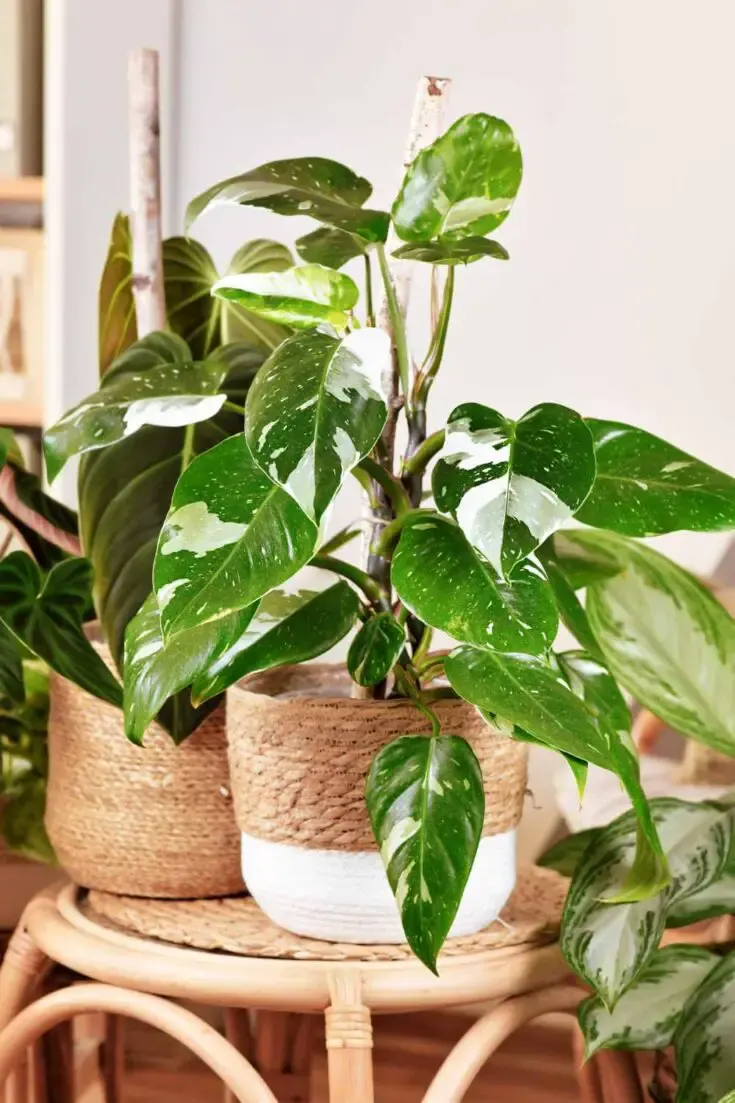
The Philodendron White Knight is a stylish climbing plant with elongated leaves with splashes of white variegation.
This lovely philodendron grows to about six feet tall as a houseplant as a vine. It can be trained onto a moss pole or staked..
This Care Guide will teach you how to keep this tropical Aroid happy all through the year.
Materials
Instructions
Soil Preference:
- This aroid requires a light soil.
- A mix of potting soil, perlite and orchid bark will keep the roots happiest.
- Here is our mix.
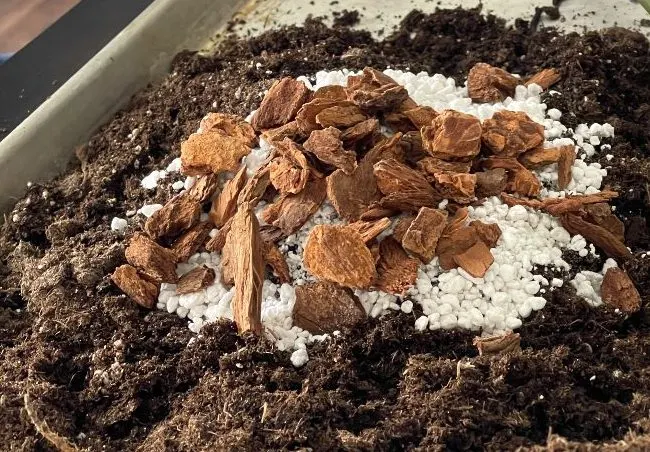
- Two parts potting soil to two parts perlite to one part orchid bark.
- A heavy soil potting mix is not recommended for aroids.
Pot Size and Type:
- If you want to encourage faster growth choose a pot about 2 inches wider in diameter than the current pot. Be SURE it's not too big or small for the root ball. (Refer to video)
- Any well drained pot can be used. It MUST have drainage.
- Repot every second year or when roots come out the drainage holes on the pot bottom To the next pot size up.
- Don't jump to a huge pot from a small one unless you wish to encourage faster growth. Just go to the next size up pot.
Lighting:
- The variegated white knight enjoys bright indirect.
It will tolerate lower indirect light it if has some brighter moments in the day, too little light causes the colors to fade.. - Some filtered sunlight from a window will be appreciated.
- Shield this aroid from strong direct light in summer south and west sunny windows. The leaves will burn.
- Tip: Window sheers or blinds can offset some brief periods of high direct light.
Watering:
- Water your plant when the soil is dry. Aroids do not like to be overly wet. Try a watering schedule of every other week.
- Watering is best done on a regular schedule so the plant is not over or under watered. Both can cause stress on the plant.
- This tropical plant enjoys humidity. In dry climates this Philodendron will thrive with a humidifier nearby. OR use a pebble tray under the pot filled half way with water.
- In dormant winter months reduce watering to when the soil is dry.
- Never let this plant get wet feet. Water when the top 2 inches of soil are dry. If the soil is compacted the bottom of the soil can remain wet which encourages root rot. Heavy wet soils attract Fungus Gnats.
Humidity:
Like most aroids, the white kinght hydrates through its leaves as well as roots. If your humidity is too low the leaf tips and edges can turn crispy and brown.,
Keep this plant at over 50% humidity. Even higher if you can.
Pebble trays, plant groupings and humidifiers all help raise humidity.
How to Fertilize:
- Apply a good quality fertilizer (linked in materials) monthly through Spring and summer.
- Decrease feedings by late Fall and allow the philodendron birkin to rest through the winter months.
Temperature:
- Keep the plant at a low of 65 Degrees F. to upward of 85 Degrees F. It enjoys warmth and humidity.
Table Top Plants:
- It’s easy to prune and shape these plants to whatever length and fullness you desire.
- They enjoy growing up Moss Poles or trellises.
- When it grows up too high to look balanced on a table either cut it back or set it on the floor to decorate a corner.
Pests:
- The White Knight philodendron is not fussy and resists pests. However all plants can get attacked by pests.
- Stress by longterm overwatering, poor light, extreme temperatures and soil conditions are contributors to plant stress..
- Spider mites, mealy bugs, scale, thrips and whitefly are the most common houseplant pests you will see.
- Read our post on The Seven Most common plant pests for more on how to identify pests and repair pest damage on your plants.
- To minimize the possibility of pests be sure to check all nursery plants before bringing them home. Do NOT purchase plants with pests. You are going to infect other plants in your home.
- Quarantine all new plants until you are sure no pests live in them.
How to Propagate:
- Propagation is easily done through leaf node stem cuttings.
- You need a 3 to 6 inch leaf stem with a couple of nodes and healthy growth.
- The nodes are easily seen as the bulges at the base of the leaf stem where it attaches to the vine.
- Cut a section of stem from the mother plant. make your cut in between the leaf nodes.
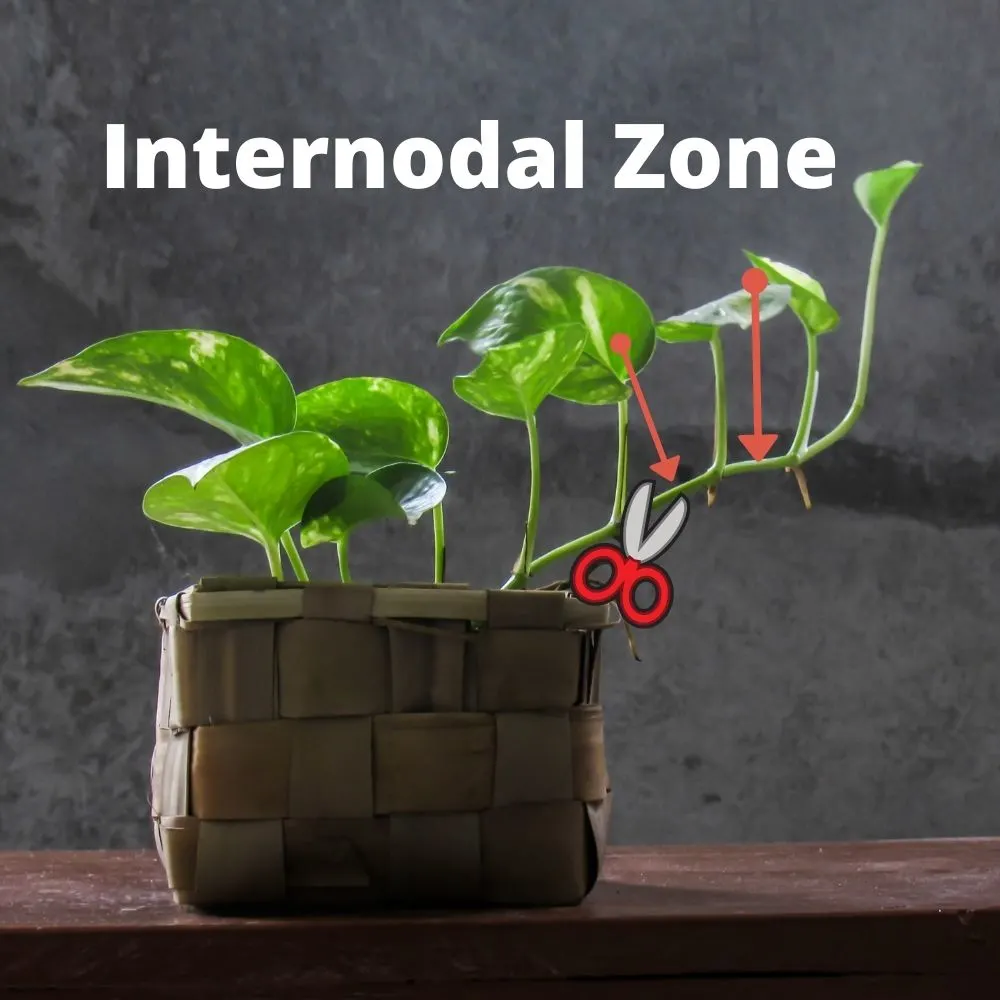 . you will often see arial roots growing out of the nodes.
. you will often see arial roots growing out of the nodes. - Place the node into a jar with water. Use tap water that has settled 24 hours in the jar to dissipate chemicals harmful to the philodendron.
- Set the jar in a well lit area.
- After several weeks roots will grow. Allow the roots to get an inch or more in length.
- Plant gently and firmly into pot with proper soil mix.
- Make sure to keep the soil moist until the roots begin to set into the soil.
Notes
I have two videos on the Pink Princess philodendron which is very similar to the White Knight in care needs and growth habit. Here is the link to the update video I did recently.
Related Content
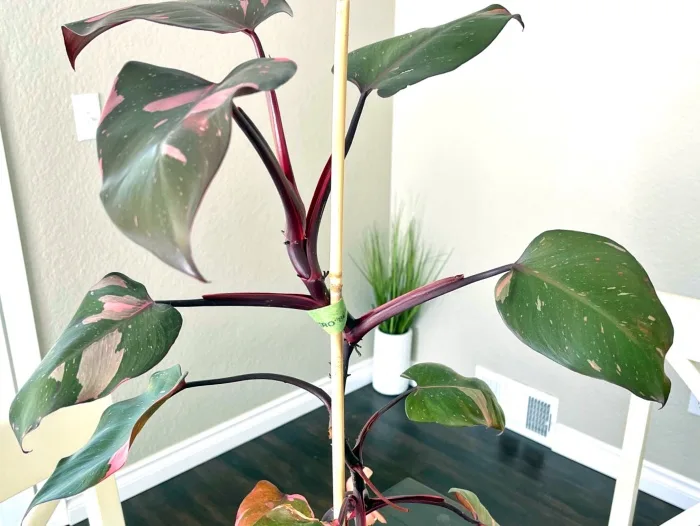
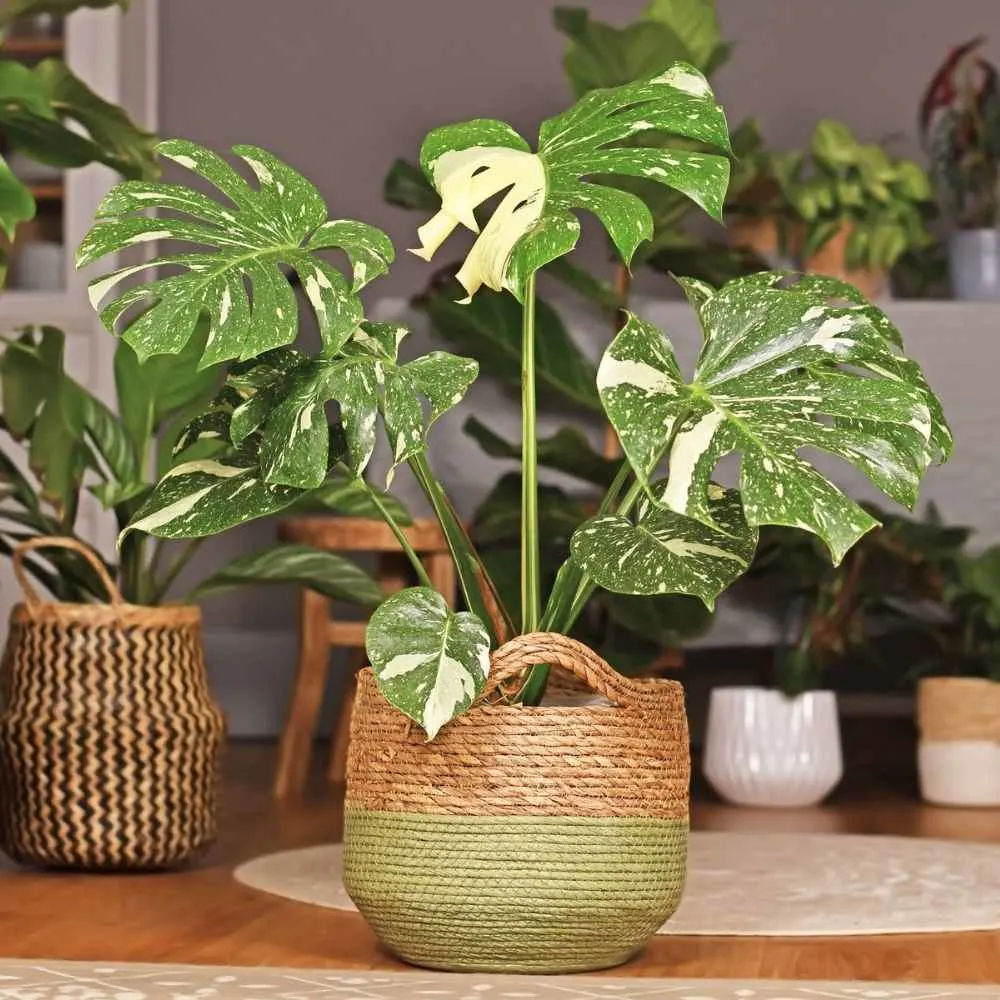
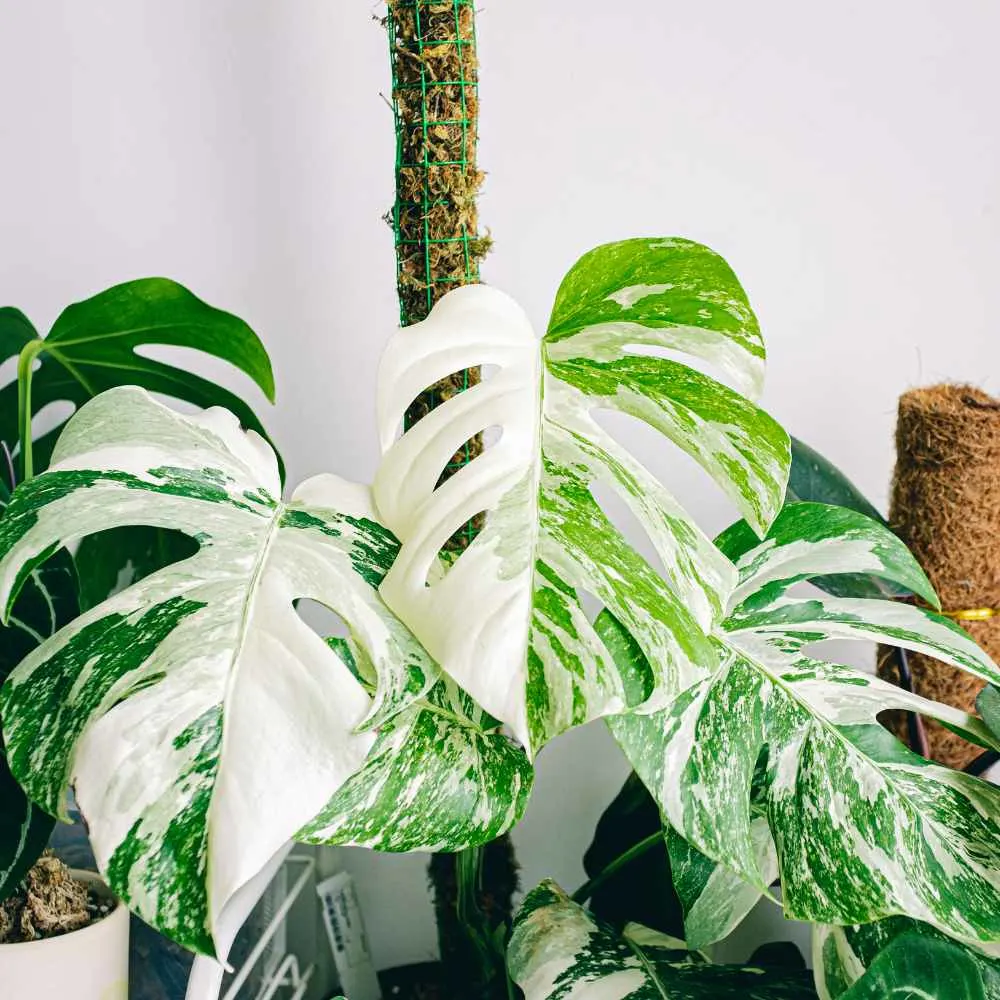
Follow Us:
Find us on YouTube, Instagram , Pinterest and TikTok! We love to Plant chat. We also comment, like and occasionally share your content to our daily stories. We’d love to see your plants. Share your joy in your houseplants. Happy Planting!
Recent Posts:
